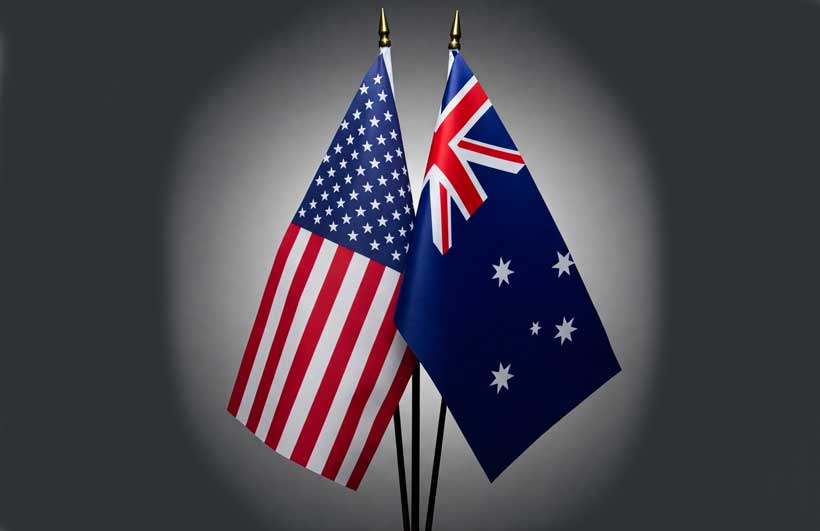Over the last decades, much has been said about Chinese CCP influence upon Australian politicians and government officials. However, ever since the days when Marshal Green served as US Ambassador to Canberra between 1973 and 75, any talk about undue US influence upon the Australian government has been put into the ‘fringe conspiracy theory’ category.
The recent revelations by the US Department of Government Efficiency (DOGE), led by Elon Musk, have alluded to massive clandestine activities by USAID and the National Endowment for Democracy (NED) that sought US influence (if not control) over other nations’ policies. This includes Australia. Past US administrations have pushed their preferred policy frameworks on their allies. The closeness of US and Australian policy positions needs a re-examination to understand the nature of any potential influence and if it was a detriment to Australia’s best interests.
In addition, the closeness of US and Australian propaganda ‘fountains’ that became exposed after the Covid-19 pandemic indicates just how much Australia is influenced by US propaganda and influence peddling programs. Much of what was spewed out through the legacy media has now been found to be totally unfactual.
The national leaders who followed the Covid propaganda lines are the same people who are responsible for Australia’s defense policy.
Australian Defence Policy
Australia’s defense policy has been staunchly pro-American since the Second World War. Australia saw the US as a friend in the wilderness, in an unfriendly part of what is termed as the Indo-Pacific, near countries that could ‘tip’ towards communism very easily. The ‘domino theory’ hypothesis supported Australian defense policy for those post-WWII decades.
Australia unquestionably followed the United States to Korea, Vietnam, and, after 9/11, when the ‘war on terror’ paradigm replaced the ‘domino theory’ in Iraq and Afghanistan. Former Prime Minister John Howard saw himself as the deputy sheriff of the US at the bottom of Southeast Asia.
Australia also stood steadfast with the United States on the containment of China, even though China was Australia’s largest trading partner. Australia sought to get even closer to the United States by stationing US troops in northern Australia as a useless gesture of solidarity. Australia joined the QUAD along with India, Japan, and Korea and enthusiastically embraced AUKUS with Britain and the US to complement the China containment strategy under the Morrison government.
Obtaining four nuclear-powered submarines was considered a masterful strategy to protect Australia from imaginary threats a decade or more in the future. Australia under Labor Prime Minister Anthony Albanese also supported Ukraine in an unnecessary war with Russia with a complex history behind it. Peter Dutton, now opposition leader and the former defense minister under the Morrison government, holds exactly the same position.
Both sides of Australian politics and the Australian defense establishment fully support US policy of containment, even with strong and powerful arguments about other potential risks and threats that are totally ignored. Such threats, if recognized, would build the basis of a defense policy that would look substantially different from what Australia has now.
Why Australian defense policy has not changed with the times is a valid question that is entitled to be asked.
Changing factors
Southeast Asia, ASEAN, and the Indo-Pacific region are all undergoing rapid changes. Indeed, things are beginning to happen so quickly, they really haven’t been noticed in Canberra.
Our near neighbor Indonesia is beginning to reincorporate the military into the civil service and civilian affairs. Malaysia is rapidly becoming a government heavily influenced by the Muslim Brotherhood. Myanmar is still involved in a deep civil war. Cambodia and Lao PDR are much closer to China, and some nations are becoming organized crime centers that reach into Australia.
At the same time, the influence of ASEAN is on the decline, while the influence of BRICS is quickly rising with Indonesia now a full member and Malaysia, Thailand, and Vietnam as partner states.
Southeast Asia is now much more developed and much more complex, as Australian influence is waning in the region. Current transactional relationships have not blossomed into fully fledged bilateral relationships, with one of two exceptions.
China (and Russia) are talking about a multipolar world built upon respect for the rule of law, where nations operate together in cooperation, rather than competition. The days of one superpower exercising primacy over the region are long gone. This requires a complete cognitive adjustment so one can see what is and what is not a real threat.
AUKUS is asking Australia to trust the United States for decades into the future. Looking at the US relationship with Ukraine today should ring alarm bells. Is Ukraine being thrown under the bus in the interests of better Russian-US relations? Forcing Ukraine to sign up to new agreements after the event can be interpreted as nothing better than gangsterism. Is NATO being cut loose? These are events policy makers in Canberra should be watching closely.
The old Henry Kissinger adage says, “To be an enemy of the United States is dangerous. To be an ally of the United States is fatal”.
Australia urgently needs to be concerned about its place in the region. Australia is quickly pedaling backward. The reality is that Australia’s leverage in the region isn’t much more than Timor Leste. Australia is alone and isolated and hasn’t realized this yet. Australian defense policy needs a total rethink.
This is thanks to DOGE, which effectively forced Australia to take off their rose-colored ‘policy’ glasses and enable Australia to see new realities. DOGE gave the world a reality check about what the US really is to allies like Australia.








